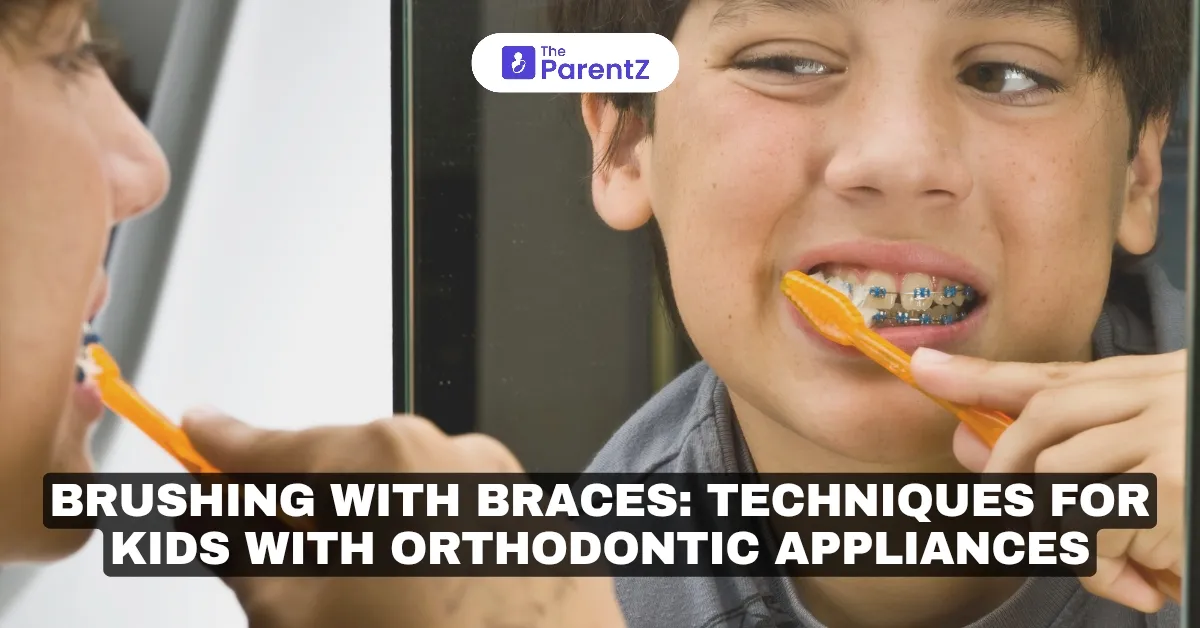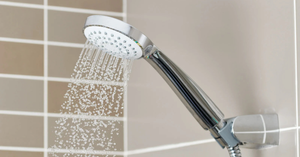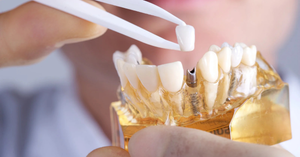Orthodontic appliances, particularly fixed braces, significantly increase the risk of dental plaque accumulation, leading to oral health issues like gingivitis, enamel demineralization, and caries. The complexity of brackets, wires, and bands creates niches where food debris and plaque can easily lodge.
Importance of Oral Hygiene with Braces
Maintaining optimal oral hygiene during orthodontic treatment is critical for several reasons:
• Prevention of Demineralization: White spot lesions, an early sign of enamel demineralization, are common around orthodontic brackets.
• Gingival Health: Poor oral hygiene leads to gingivitis, characterized by red, swollen, and bleeding gums.
• Avoidance of Caries: Food particles trapped around braces can cause cavities if not cleaned properly.
• Successful Orthodontic Outcomes: Good hygiene ensures smooth orthodontic progress and reduces the risk of treatment delays due to oral health complications.
Brushing Techniques for Children with Braces
1. Choosing the Right Toothbrush
• Orthodontic Toothbrush: A soft-bristled toothbrush with a V-shaped or U-shaped bristle design is recommended. This design allows bristles to clean around brackets effectively.
• Electric Toothbrush: Studies show that electric toothbrushes with oscillating-rotating heads are more effective in plaque removal around braces compared to manual brushes.
• Interdental Brushes: Small, cone-shaped brushes are essential for cleaning between brackets and under archwires where regular brushes can’t reach.
2. Brushing Method: The Modified Bass Technique
The Modified Bass Technique is considered the gold standard for individuals with orthodontic appliances:
• Step 1: Place the toothbrush at a 45-degree angle to the gum line.
• Step 2: Use gentle, circular motions, focusing on the gum line where plaque tends to accumulate.
• Step 3: Brush the top of the brackets by angling the brush downward.
• Step 4: Brush the bottom of the brackets by angling the brush upward.
• Step 5: Don’t forget the chewing surfaces and the inner surfaces of the teeth.
• Step 6: Clean the tongue to reduce bacteria that cause bad breath.
3. Duration and Frequency
• Brush for at least 2-3 minutes, ensuring each quadrant is thoroughly cleaned.
• Brush twice a day (morning and night), with an additional rinse or quick brush after meals if possible.
Supplementary Oral Hygiene Aids
1. Fluoride Toothpaste
• Use a fluoride toothpaste with at least 1,000 ppm fluoride to strengthen enamel and prevent demineralization.
2. Flossing with Braces
Flossing is challenging with braces, but crucial:
• Orthodontic Floss Threaders: Help guide dental floss under archwires.
• Super Floss: Has stiff ends and a spongy middle, ideal for braces.
• Water Flossers: An effective alternative, especially for younger children who struggle with traditional floss.
3. Mouth Rinses
• A fluoride mouth rinse can help reduce plaque and strengthen enamel.
• Antimicrobial rinses (e.g., chlorhexidine) may be prescribed for children with signs of gingivitis, under a dentist’s supervision.
Common Challenges and Solutions
1. Food Getting Stuck in Braces
• Solution: Encourage rinsing the mouth with water immediately after eating and using an interdental brush to remove debris.
2. Sore Gums or Teeth
• Solution: Use a soft-bristled toothbrush and rinse with warm saltwater to soothe sore areas.
3. Lack of Motivation in Kids
• Solution: Make oral hygiene fun with reward charts, timed brushing apps, or letting kids choose their own toothbrush with fun designs.
Dietary Advice for Better Oral Health with Braces
A healthy diet complements good oral hygiene:
• Avoid sticky and sugary foods that increase plaque formation.
• Limit acidic beverages like soda and citrus juices to prevent enamel erosion.
• Encourage crunchy fruits and vegetables that naturally clean teeth, but cut them into small pieces to prevent damage to braces.
Role of Parental Supervision
Children, especially younger ones, need supervision:
• Parents should check for missed spots after brushing.
• Use disclosing tablets to highlight plaque areas that need more attention.
• Regular dental visits every 4–6 weeks during orthodontic treatment for professional cleaning and assessment.
Professional Recommendations
• Regular Cleanings: Schedule professional cleanings every 3–4 months.
• Orthodontic Check-ups: Routine orthodontic visits help monitor both the treatment progress and oral hygiene status.
• Fluoride Applications: In-office fluoride varnish treatments can provide additional protection against enamel demineralization.
Conclusion
Proper brushing techniques are essential for maintaining oral health during orthodontic treatment in children. Dental professionals should educate both children and their parents on effective oral hygiene practices, emphasizing the importance of consistency and proper technique. A combination of the right tools, techniques, and professional support can help children with braces achieve healthy, beautiful smiles without the risk of dental complications.








Be the first one to comment on this story.